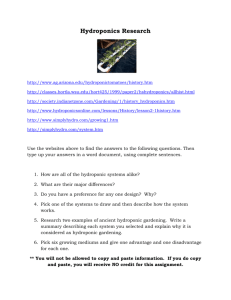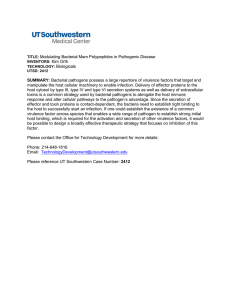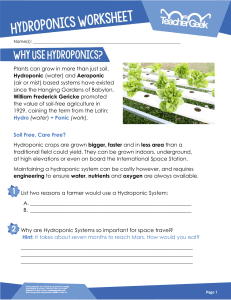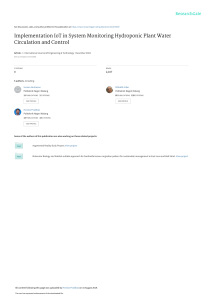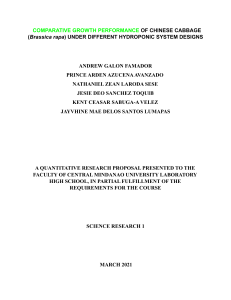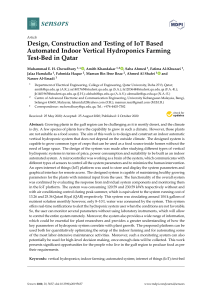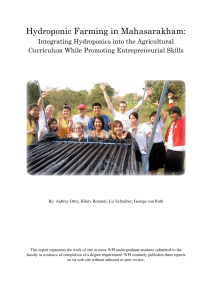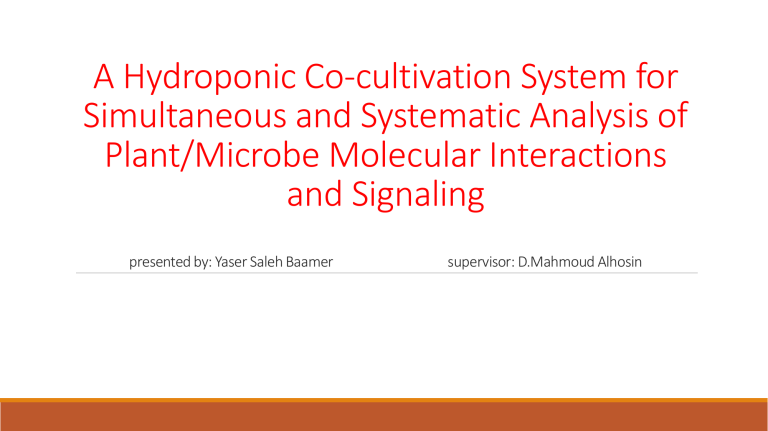
A Hydroponic Co-cultivation System for Simultaneous and Systematic Analysis of Plant/Microbe Molecular Interactions and Signaling presented by: Yaser Saleh Baamer supervisor: D.Mahmoud Alhosin Introduction The role of plant associated microbes in different plant life stages is crucial, they influence biogeochemical cycling, plant growth and health, and many more. Microorganisms interact with plants directly through plant cell wall contact, and indirectly via chemical secretion and signaling. Chemical secretion from roots attracts certain microorganisms that find perfect condition to flourish in the rhizosphere. This species-specific attraction either benefit or detriment the plant host. Cont… Arabidopsis thaliana-Agrobacterium tumefaciens is the model applied to study molecular interaction. Initial stages of is less well understood, due to the limitation of conventional approachs. Such as cell suspension which lack of plant morphology. And artificially wounding plant method that significally different from pathogen infection in nature. In addition to supplementation with synthetic chemicals to induce plant host response or pathogen virulence. Cont… To over these challenges, hydroponic co-cultivation system that allow for natural cell signaling homeostasis during plant-microb interaction. Giving us the chance to analyse plant-microb molecular interactions and signaling in simultaneous and systematic manner. Method Seeds wear sterilized and grow in sterilized system. Then, after 3 days the system inuclated A.tumefaciens (1x10^7 cell\ml). The attachment of microbe to the root visualized with fluorescent microscope. Bacterial and plant transcript analysis, sectrome profiling for compound detection via (ESITOF-MS) wear also done. Results Growth in the hydroponic cocultivation system Cont… Microscopic visualization of Agrobacterium attachment to plant roots Cont… Activation of Agrobacterium virulence transcripts Cont… Expression of plant transcripts Cont… Alterations to host secretion profiles Discussion In this syudy we wear able to mimic natural environment, and to evaluate exactly gene activity under such condition. We suggest that future dtudies on high expressed genes and chemicals is needed

